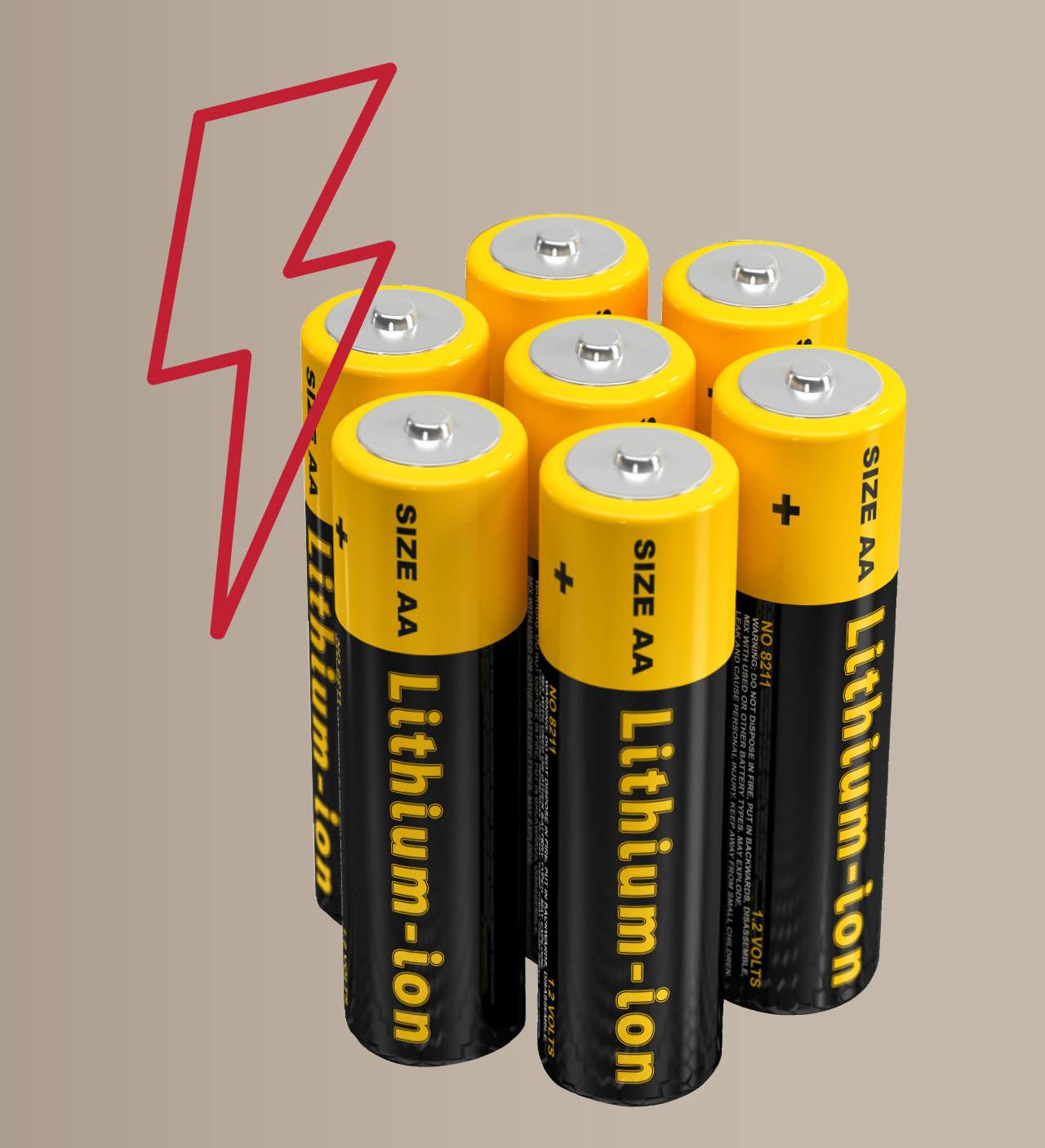How to Stay on Brand and Avoid Potentially Dangerous Fake Batteries and Chargers for Your Devices

By Dr. Judy Jeevarajan,
vice president and executive director of the Electrochemical Safety Research Institute (ESRI)
While conducting research on various batteries over the past several years, at certain points we heard about cases of lithium-ion batteries that experienced fire and thermal runaway during transport. Looking into it, we realized many of these incidents were connected to undeclared shipments, and almost always the quality of the batteries was very low. This led us to investigate more closely and discover that these batteries were counterfeit — that is, pretending to be a brand they were not — and therefore non-compliant to current safety standards.
Since many researchers procure batteries that can be obtained with a quick turnaround time and at a low cost, we decided to carry out more research in this area but procuring cells from online sources. Today we’d like to share some information with you on how to recognize and avoid dangerous fakes, ensure you purchase trustworthy, reliable batteries and chargers, and know what to do in an emergency.

Always order from the device manufacturer
Lithium-ion batteries tend to be highly specialized for their specific use in a certain device. This means oftentimes those that are from the original equipment manufacturer (OEM) are not available online and replacement batteries from the OEM are not available in retail stores. As a result, people have increasingly turned to purchasing replacements online, which is where counterfeit manufacturers have profited most. To be on the safe side, always order lithium-ion batteries directly from the manufacturer of your device.
This recommendation also applies to battery chargers. Using a generic or non-branded charger can cause thermal runaway in even a properly manufactured and certified battery. Lithium-ion batteries operate in different voltage ranges based on the chemistry of the components, so an incorrect or counterfeit charger will not know how to “talk” to the battery in the right way.
Related
Counterfeit products pose many safety risks, as they may be prone to failure and cause fires and explosions. Discover more about how to detect and mitigate the risk of counterfeit cells. To learn more, download this white paper from Be Safe Buy Real.

How to recognize fake batteries
Many manufacturers let you buy directly from their website, or they list trusted vendors of their batteries. If it is not possible to buy from one of these vendors, here are a few tips to guide your purchasing decisions.
Does the battery have a ‘UL,’ ‘CE,’ or similar mark?

Marks with a “UL” in a circle symbol, or “CE” for the European Union, indicate that batteries, chargers, and other products comply with national and/or international safety certification requirements. Counterfeiters will not bother getting their products certified, so if it does not have one of these marks, don’t buy it. Unfortunately, counterfeiters may also fake the mark, so the mark alone does not necessarily designate safety.
Look for visual clues of inauthenticity
Familiarize yourself with the legitimate manufacturer’s design, and if you notice any significant aberrations, stay away from it. Counterfeiters can be very crafty. We have seen name brands on batteries that use the same logo and typeface but just change a letter or two — and most people do not notice.
Compare prices
You should find out what the original battery usually costs, and if you find something significantly cheaper, it is likely a counterfeit. It’s not worth risking your health to save some money on a potentially dangerous battery.
Be wary of false claims
Look at the specifications on the original battery. If the new one you want to buy promises more power or longer endurance than what the OEM one stated, the sellers are probably trying to fool you.
Another red flag: Delivery that’s too fast to believe
While you may need your battery quickly, if you order it online and it is immediately available, something is probably not right. Remember, lithium-ion batteries are highly specialized for a specific purpose. An online vendor is not likely to have exactly what you need in stock.
Look out for wording like “brand equivalent” or “brand compatible”
This means the battery is not from the original manufacturer, and it will most likely not work properly in your device and is potentially hazardous.
If you are buying in bulk, e.g., not only for yourself but for an association or company, you should also consider verifying the serial number. Manufacturers and/or reputable suppliers should be able to verify the serial number of cells and batteries and inform about the dates when they were manufactured.
Safety is a shared responsibility
Many organizations collaborate on working to protect the consumers. The United Nations (UN), for instance, has strict regulations governing air transport of lithium batteries (Manual of Tests and Criteria, UN 38.3, 7th edition). One example of a UN requirement travelers may be familiar with is not being allowed to transport a power bank or laptop in your checked luggage. Law enforcement and airlines that carry cargo also keep an eye out for undeclared shipments that contain batteries, which is often in an attempt to avoid being caught as counterfeits.
Still, counterfeiters’ determination knows no limits when seeking new ways to slip past such controls. That’s why consumers also play an important role as a partner in the fight against counterfeiters: by avoiding purchasing their substandard products in the first place.
By learning about counterfeit batteries, consumers can help make the world a safer place. When you get into the habit of purchasing lithium-ion batteries the right way, you will also be a role model for younger people, for whom it will become second nature to keep an eye out for authentic and safe products.
What to do in an emergency
While an important part of safety is prevention, there may be times when you need to act fast in response to an emergency. In extreme cases, there may be a hazardous liquid spill due to high temperatures and venting, smoke, fire, and thermal runaway.
If you happen to have a counterfeit or faulty battery and an incident happens, you need to know how to react correctly. Here are a few tips on what to do when a battery fails.
- Use appropriate personal protective equipment (PPE). This can include high temperature tolerant gloves and eye protection. Clean up procedures could include a spill control kit and the use of neutralizing agents if there is liquid electrolyte leakage. A fire extinguisher of the Type ABC can be used with small Li-ion battery fires, depending on the type of cell and the extent of the hazard. It is best to let the fire department and firefighters deal with any large Li-ion fires.
- Remove charging sources or loads on the battery. When a battery fails, unplug it from the charger or load. It can be moved to a safe area after the battery has cooled down completely. Report it to the manufacturer and follow instructions from the manufacturer for safe disposal.
- Seek emergency help if needed. In the event of a catastrophic failure that causes physical injury to individuals, go to the emergency room to take care of any burns or toxic fume ingestions.
Up next
Now you know some ways to avoid dangerous fakes and the dangers they can pose. Want to learn more about the science behind battery safety and incidents that can occur around unsafe counterfeit batteries? Read the next part in this two-part series to learn more.
PUBLISHED









